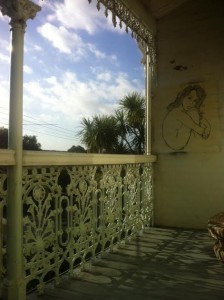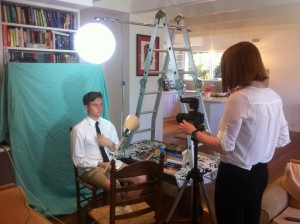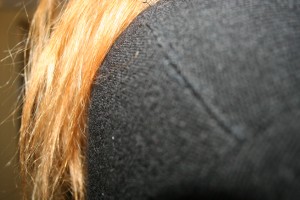My Self portrait video aims to collaborate all aspects of my experiences, surroundings and passions into a visual, moving collage. I’ve used videos and text of my experiences overseas, which juxtapose the sounds from my home in Melbourne in an effort to highlight and the ways in which those experience influence my current life. I’ve tried to show quick, short jump cuts that exhibit my images, identifying an overwhelming way in which my passions and surroundings can inundate my life. Images flicker between the bicycle clip as way of showing there ongoing impact on my ever changing life. The sounds of are used to represent the present; sourcing sounds of my everyday social encounters and daily routine, differing from many of the video and image based artefacts in the portrait.
In this self portrait I’ve aimed to also be very discreet with what the viewers are seeing, i didn’t want to show each image, video, sound or text in an obvious or overtly “in your face” kind of way. Ive tried to draws parallels and aline certain sounds with certain images in an effort to place ones own interpretations on the video. I think that the recorded typing of text played over the moving image in the mountains is the most intriguing part of the portrait. I believe it works well in presenting text as a flowing thought and stream of honest experience in a visual way.
I found it hard to create an high quality portrait, in the sense that most of my images and videos were sourced and developed on my iPhone which doesn’t have the best quality. I was disappointed that this came through, and it was difficult to change the quality of the moving images however i believe I’ve done the best with the equipment i had.
Although the portrait may be regarded as random or arbitrary i have tried to place and order all the elements in a cohesive way, and i hope this has come across as sincerely to viewers as it has to myself.



